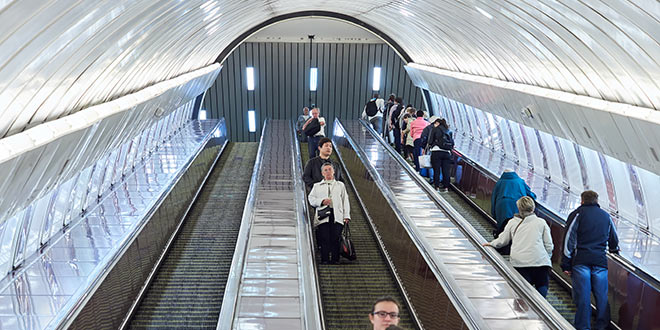
Prague has dusted off the idea of building a metro line to the airport. It would build it alone if it failed to meet the requirement at the Ministry of Transport. The City Hall wants the state to declare that it will start building the planned railway from Prague to Kladno around the airport complex and without European subsidies.
“We are asking the government to declare that the railway to the airport and to Kladno is of national interest and that the state will pay for it even without European subsidies,” said Deputy Mayor of Prague, Petr Dolínek (CSSD), who will attend the meeting on Tuesday.
“The state is rich enough to pay for it. We are afraid there will be no action in five years,” adds the Deputy. The Ministry does not prepare changes to the project, so there should be no further delays. “We still insist on the planned modernization of the rails in the current track,” says Transport Ministry spokesman, Zdeněk Neusar.
The ministry and the city are dealing with changes in the land use plan. Recently, for example, the section between Prague Bubny Station and the planned stop at Prague Exhibition Grounds was solved.
Whether the city or the government decides on any option, it will definitely not be sooner than ten years.
Today it is certain that the completion date of the construction did not come any closer – it is far from the beginning. At that time, the state investor, the Railway Infrastructure Administration (SŽDC), expected the completion of the construction of the railway to the airport at the turn of 2023 and 2024, then 2025. The new railway administration, due to difficulties with the Prague Territorial Plan, talks about the turn of 2028 and 2029.
Metro is Not a Smart Option, Says Expert
However, the idea to take the metro to the airport is not liked very much by Vladimir Pušman from the CTU Transport Faculty.
“The resulting track would be considerably longer than the current bus transfer route. Thanks to this, we would be disadvantaged by the metro speed. The negative effect would deepen in the future when the rail would be put into operation and the metro could not compete in time. Expensively built connections would become unattractive,” Pušman says. According to preliminary calculations of the Prague Transport Company, the new metro line would cost 27 billion and would be finished in eleven years.
Instead of a metro, Pušman suggests a cheaper variant, a tram. Still, it would be a temporary solution, as according to Pušman, a train is the solution. “The railway provides a fast and uninterrupted connection of the airport with other places in the Czech Republic. Not everyone coming to the airport heads to Prague,” he says.
According to Prague Deputy Minister Dolínka, despite these arguments, the airport metro would fulfill its purpose. “Nobody expects a quarter of an hour to go to the centre,” says the deputy, adding that the length “will not hurt”. On the line there would be shifts to other connections, which would make it easier for land transportation. Prague is not even afraid of buying land that complicates the construction of the Metro D line. The terminals are owned directly by the airport and perhaps belong to the city of Bílá Hora. But the key question is the time.
The latest estimates indicate that the first trains to the airport will be launched at the turn of 2028 and 2029. But the Prague ministry does not believe that the deadline will be met; the city will start building a metro. In the extreme case, there is a risk that both the train and the underground railway will run to the airport.
To the Airport by Taxi or by Your Own Car
Approximately one-fifth of people use public transport, said Marika Janoušková, a spokeswoman for the airport. This number is extremely low compared to other European airports that already have rail connections.
Usually, up to half of all people travel to the airport by public transport, while most Prague fliers travel individually and using taxis. At present, taxi cars transport roughly one-fifth of passengers in the same way as buses, and the rest are those who drive their own car to the airport.
